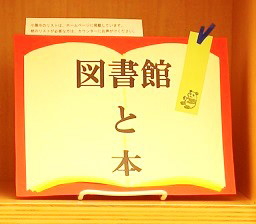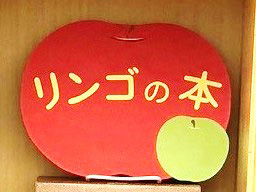The world of books from displays-Ideas for displays in Children's Library
3. Processes of creating displays
3-1 Theme Settings
The organizer of the display selects themes as follows:
- Select cases familiar to children from seasonal events
- Seek and expand themes from books which are recommendable for children
- Select from library events
- Librarian's favorite themes
Key Points
- Is the theme easy for children to understand (familiar to them)?
- Is the theme suitable to many children (not too serious)?
- Can enough books be collected under the theme?
3-2 Selection of books
Utilizing book selecting tools and other methods, the organizer creates a list of nominated materials which contains more books than the estimated amounts for display.
After creating a list, the organizer seeks the opinions of other staff about the list and books to be added.
3-2-1 How to select books
Select from a book stock
The organizer selects books based on the knowledge acquired during his or her routine work of selecting and ordering for the Children's Library.
List of book selecting tools (In Japanese)
Here are tools we often use.
List of past small themed displays (In Japanese)
Related themed displays held in the past are also useful.
3-2-2 Selection of the books for display
The organizer carefully selects materials for display by looking over the list of nominated books.
Check Points
- Check whether the selected books' links to the theme are natural and not forced.
- Check whether the book's contents meet the intended theme. Especially, the titles of fiction novels may differ from their contents, thus the organizer should make sure to skim the contents.
- Check whether the target age groups are well-balanced. The organizer should select a wide range of books for various age groups including infants, and all ages of elementary school children.
- Check whether several books written by the same author have been selected. Depending on themes, the organizer may select several books written by the same author. In such cases, keeps a balance of genres such as picture books and story books.
- Check whether the selected genres are well-balanced.
The organizer selects books from a wide range of genres such as picture books, story books, non-fiction, poetry, word games, etc. - Check whether the countries and regions where the selected books are published are well-balanced.
The organizer selects books that match the theme from those published in Asia, Africa, etc., in addition to books published in Japan and translations from English. For the purpose of international understanding, if books translated into Japanese are selected, the original books will also be exhibited. - Check whether books match the seasons.
The organizer does not select unseasonal books even for seasonless themes.
3-3 Titles and profiles of displays
Titles
Titles should be easy for children to understand. It is a good idea to use titles which can conjure up an image of the contents of displays.
Profiles
Profiles should be written in easy and simple words for children. Kana readings should be added to kanji characters when necessary.
3-4 Ideas for displays, etc.
Creating Signs
The organizer creates signs which are attractive for children with a warm friendly atmosphere in accordance with the chosen themes.


Positioning of books
The organizer arranges books considering children's eye level. For example, picture books for toddlers are arranged at the lowest level of the bookshelves and literature books for higher grade students in elementary schools are arranged on the higher levels.
Listing
The organizer compiles lists which indicate titles, authors, publishers and years of publication. The ILCL does not provide a loan service, but users can borrow books from their nearest libraries based on bibliographic information on the list.
4. Other benefits of displays
In addition to giving children motivation for reading as mentioned in 1.Purposes of displays above, displays have the following benefits for librarians.
- Lists compiled can be used for reference services at the counter, such as introduction of books by genre.
- Lists posted on the ILCL's website can be referred to by other libraries for their displays and convey the appeal of the ILCL's books.
- Introducing the theme and representative materials of a new display to library staff enables staff members not only those who are directly engaged in services for children, to learn about children's books.
- By rereading materials in the Children's Library in the framework of themes, staff can widen their views and deepen their understanding of children's books.
Conclusion
The primary purpose of the displays of children's books is to create opportunities for children to pick up books, but it also helps librarians to deepen their knowledge of children's books.
In addition, by posting the display list on the website, you can convey the appeal of the library books in the collection and the activities of your own library to a wider audience.
We hope that this article will be helpful to those involved in children's services.

